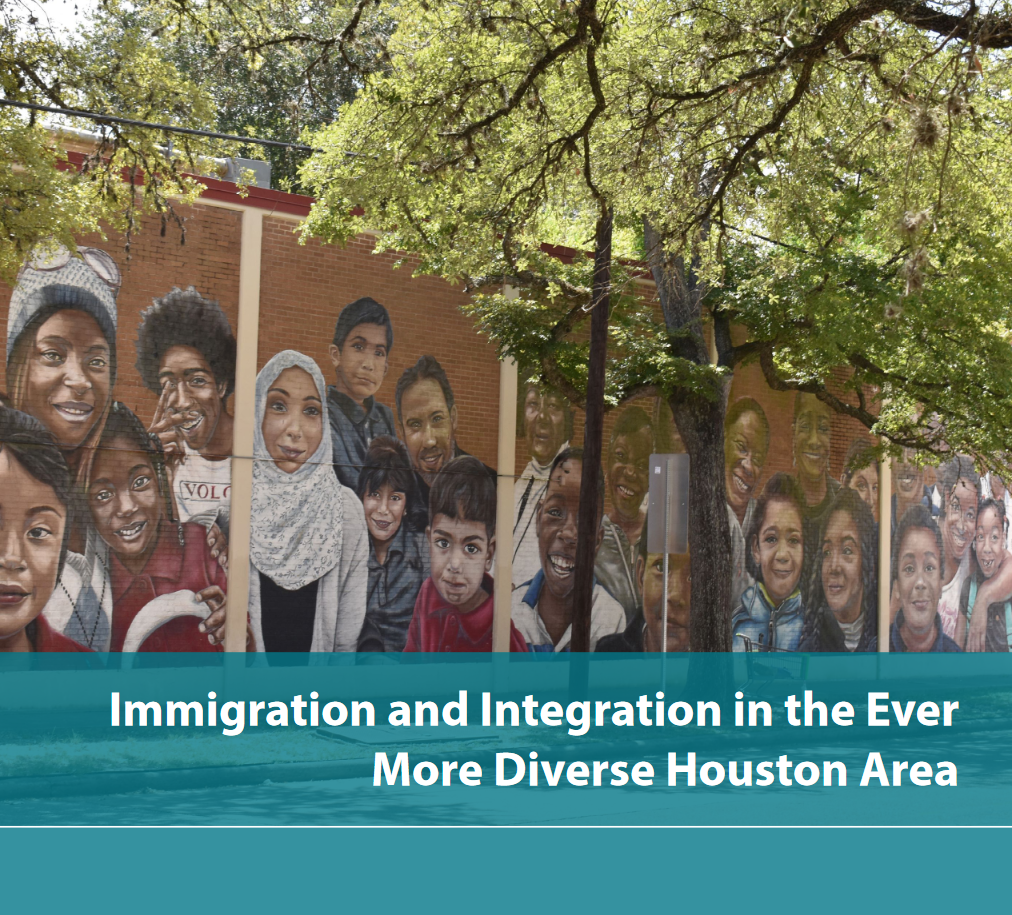In a city pulsating with ever-expanding diversity, the Houston metropolitan area is undergoing a profound metamorphosis, and at the heart of this transformation is its vibrant immigrant population. Meet Mrs. Valerie Lacarte, a luminary in the field, wielding her expertise as a Senior Policy Analyst with MPI’s U.S. Immigration Policy Program. In the dynamic realm of research design and data analysis, she delves into the intricacies of native-immigrant disparities in socioeconomic outcomes and access to public benefits for vulnerable immigrant and humanitarian populations.
This groundbreaking report, fueled by data from the U.S. Census Bureau’s American Community Survey and other authoritative sources, casts a radiant spotlight on the composition and pressing issues surrounding Houston’s immigrant community. It marks the third in a series of publications chronicling the global migration phenomenon converging on Houston.
In this sprawling urban landscape, where diversity is not just a statistic but a pulsating reality, the immigrant tapestry is woven with threads of resilience and cultural richness. Nearly a quarter of Houston’s denizens are immigrants, injecting vitality into the city’s economic veins and fostering vibrant communities. Over the last decade, the foreign-born population in the expansive nine-county metro area has surged to a staggering 1.7 million, with Mexican immigrants constituting 37%. However, the narrative is evolving, with remarkable spikes in populations from countries like Venezuela experiencing a staggering 464% growth, Cuba at 259%, and Nigeria at 251%.
Beyond the numbers, the report unravels intriguing nuances in the mosaic of Houston’s immigrant landscape. While the majority identify as Latino, a closer look reveals a kaleidoscope of immigration statuses, from unauthorized immigrants to green-card holders and naturalized citizens. In 2019, Latinos dominated among unauthorized immigrants and green-card holders, while Asian and Pacific Islander immigrants took the lead among naturalized citizens and non-immigrant visa holders.
Peering into the future, the report illuminates the challenges faced by Houston’s youngest residents, revealing that almost half of the city’s children reside in households with at least one immigrant parent. Yet, educational disparities persist, with over half of immigrants reporting limited English proficiency. Moreover, a significant underemployed population, including college-educated immigrants, underscores the complexity of their journey, with 30% of Houston’s workforce being foreign-born.
While immigrants contribute indispensably to key sectors, income disparities and varying home ownership rates persist. The report unveils a tapestry where 73% of naturalized citizens own homes, in stark contrast to the 19% of unauthorized immigrants. These disparities extend to the challenges faced by non-citizens eligible for naturalization, grappling with barriers related to language proficiency, education, and lower incomes.
Amidst this kaleidoscope of challenges and triumphs, Houston stands as the most diverse metro area in the country, with a resounding 24% of its population being foreign-born. The number of immigrants in Houston has not only increased by an impressive 32% but has also doubled the U.S. growth rate. In this vibrant city, Houston’s destiny is intricately intertwined with the contributions and challenges of its diverse immigrant population, shaping not only its present but also its dynamic and promising future.
https://www.migrationpolicy.org/research/immigration-integration-houston-area
En una ciudad palpitante con una diversidad en constante expansión, el área metropolitana de Houston está experimentando una profunda metamorfosis, y en el corazón de esta transformación se encuentra su vibrante población inmigrante. Conozca a la Sra. Valerie Lacarte, una destacada en el campo, que ejerce su experiencia como Analista Senior de Políticas en el Programa de Políticas de Inmigración de los Estados Unidos de MPI. En el dinámico ámbito del diseño de investigación y el análisis de datos, profundiza en las complejidades de las disparidades socioeconómicas entre nativos e inmigrantes y el acceso a beneficios públicos para poblaciones inmigrantes vulnerables y humanitarias.Este informe innovador, alimentado por datos de la Encuesta de la Comunidad Estadounidense del Buró del Censo de los Estados Unidos y otras fuentes autorizadas, arroja una luz radiante sobre la composición y los problemas apremiantes que rodean a la comunidad inmigrante de Houston. Marca el tercero de una serie de publicaciones que narran el fenómeno de migración global que converge en Houston.En este extenso paisaje urbano, donde la diversidad no es solo una estadística sino una realidad palpitante, el tapiz inmigrante se teje con hilos de resistencia y riqueza cultural. Casi una cuarta parte de los habitantes de Houston son inmigrantes, inyectando vitalidad en las venas económicas de la ciudad y fomentando comunidades vibrantes. En la última década, la población nacida en el extranjero en el extenso área metropolitana de nueve condados ha aumentado a asombrosos 1.7 millones, con los inmigrantes mexicanos constituyendo el 37%. Sin embargo, la narrativa está evolucionando, con aumentos notables en poblaciones de países como Venezuela experimentando un asombroso crecimiento del 464%, Cuba al 259% y Nigeria al 251%.Más allá de los números, el informe desentraña matices intrigantes en el mosaico del paisaje inmigrante de Houston. Mientras que la mayoría se identifica como latino, una mirada más cercana revela un caleidoscopio de estatus migratorios, desde inmigrantes no autorizados hasta titulares de tarjetas verdes y ciudadanos naturalizados. En 2019, los latinos dominaron entre los inmigrantes no autorizados y los titulares de tarjetas verdes, mientras que los inmigrantes asiáticos e isleños del Pacífico tomaron la delantera entre los ciudadanos naturalizados y los titulares de visas no inmigrantes.Mirando hacia el futuro, el informe ilumina los desafíos que enfrentan los residentes más jóvenes de Houston, revelando que casi la mitad de los niños de la ciudad residen en hogares con al menos un padre inmigrante. Sin embargo, persisten disparidades educativas, con más de la mitad de los inmigrantes informando de una proficiencia limitada en inglés. Además, una población significativamente subempleada, incluidos inmigrantes con educación universitaria, subraya la complejidad de su viaje, con el 30% de la fuerza laboral de Houston siendo nacida en el extranjero.Aunque los inmigrantes contribuyen de manera indispensable a sectores clave, persisten disparidades de ingresos y tasas variables de propiedad de viviendas. El informe revela un tapiz donde el 73% de los ciudadanos naturalizados son propietarios de viviendas, en marcado contraste con el 19% de los inmigrantes no autorizados. Estas disparidades se extienden a los desafíos enfrentados por los no ciudadanos elegibles para la naturalización, que luchan con barreras relacionadas con la competencia en el idioma, la educación y los ingresos más bajos.En medio de este caleidoscopio de desafíos y triunfos, Houston se erige como el área metropolitana más diversa del país, con un resonante 24% de su población siendo nacida en el extranjero. El número de inmigrantes en Houston no solo ha aumentado en un impresionante 32%, sino que también ha duplicado la tasa de crecimiento de los Estados Unidos. En esta ciudad vibrante, el destino de Houston está intrincadamente entrelazado con las contribuciones y desafíos de su diversa población inmigrante, dando forma no solo a su presente, sino también a su futuro dinámico y prometedor.
https://www.migrationpolicy.org/research/immigration-integration-houston-area



